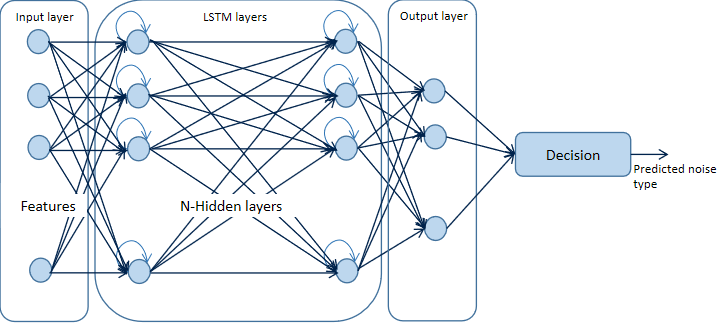Artificial intelligence stands at the forefront of technology’s future. It can be used to solve complex problems efficiently across multiple industries such as Automotive, Healthcare, Social media, Gaming, Entertainment etc. The applications of AI include but not limited to Automotive industry,Computer vision, Speech recognition, Voice assistants,Translation and Chatbots, Healthcare, Finance etc. These technolgical innovations made lives easier by offloading most of the human efforts to machines.
SoCtronics has experience on multiple subsets of AI across different domains such as Machine learning, Deep learning, Natural language processing etc. Some of the algorithms that we worked on are Radar based target classification using DNN, RNN based Urban sound classification and VAD, NLP based Intent classification, Entity extraction and Keyword detection etc. We combine our rich experience in the field of AI and DSP to provide design and implementation services to customers.
The following services are offered by SoCtronics:
- . Design and develop ML/DL/NLP based solution for a given application/problem
- . Optimal implementation of application for given platforms
- . Customization and tuning of the algorithm
- . Porting a MATLAB/Python to C and embedded platforms
- . Optimize MIPS and memory according to the resources available on Embedded platform
Soctronics is the one stop solution to all the design and implementation services in the field of AI.
Radar based target classification using CNN
Case-study

View more
This solution is implemented for classifying traffic at traffic signal junction through radar mounted on pole. The objective is to classify the vehicles into different classes- 2 wheeler, 3-wheeler, 4-wheeler, pedestrian. The implementation uses CNN with multiple Convolution and Fully connected layers.
The Radar mounted on traffic poles will receive the back scattered signal from different vehicles. Signal processing techniques are used to filter out the static objects, identify the regions where the targets are present and extract the features of the target. In training mode, labeled features are used for training the model. In real time, the trained model is used for classifying the vehicles based on the input features. For all the 4 classes, the accuracy of prediction is more than 90%. This accuracy is achieved by carefully selecting the chirp configuration, selecting the correct features which distinguish the targets, selecting the best CNN algorithm/network and training and tuning the model.

Text to script conversion based on NLP
Case-study

View more
This solution translates the text commands to predefined set of function calls. Idea is to extract intent and entities from the sentences and map them to function and its arguments.
Different algorithms are used for Intent and Entity extraction. In the training phase, the labeled sentences are tokenized and converted to vectors through dictionaries. These vectors are trained and models are created. In real time, the unlabeled sentences from the text are passed through the models. For each sentence, intent and entities are extracted and are mapped to functions and arguments. More than 90% accuracy is achieved for both the models through identifying the right algorithms for intent classification, entity extraction and designing the architecture for better accuracy.

Urban sound classification using RNN
Case-study

View more
RNN based sound classifier which will classify 10 different urban sounds - Air-conditioner noise, Car-horn, Children-playing, Dog-bark, Drilling, Engine-idling, Gun-shot, Jack-hammer, Siren, Street-music. LSTM is the underlying algorithm used for classification. The Urban sound classifier divides the audio into frames and creates a 2D map of features vs Time. This map is processed by the N-LSTM hidden layers and a classifier to give out the decision.

